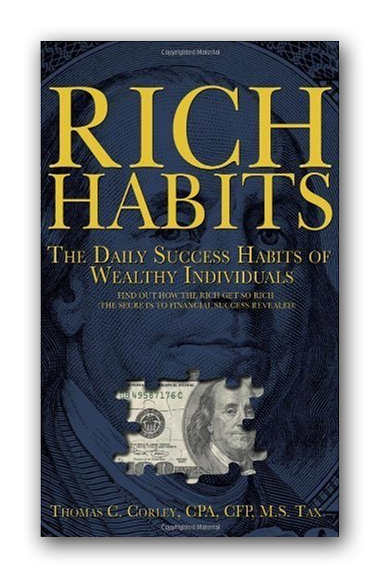
I’ve been studying the wealthy and the poor for nearly 12 years now. One of the things that I’ve noticed is that almost 100% of the time the media misinforms its readers with respect to the definition of wealth. So, I thought I’d clear it up for you using the same language used by the media.
Three Classes of Rich:
- Affluent – These are individuals with net assets (assets minus liabilities) of between $100,000 – $1 million.
- High Net Worth – These are individuals with net assets (assets minus liabilities) of between $1 million and $3 million.
- Ultra High Net Worth – These are the individuals with net assets (assets minus liabilities) $3 million and above.
In my Rich Habits Study only Ultra High Net Worth individuals made the cut. But, in addition to having an Ultra High Net worth, in my study they needed to also have an annual gross income of $160,000 or more. Below is the two-part test every Ultra High Net Worth individual needed to satisfy in order to meet my definition of Rich:
- Net Assets of $3.2 million or more AND
- Gross Income of $160,000 or more.
Some might argue that those individuals who meet the High Net Worth category of between $1 million and $3 million are “Rich” as well. And you might be right. In order for the High Net Worth individuals to be considered “Rich”, however, they would very likely need to live what I call a minimalist lifestyle. A minimalist lifestyle is one where the individual either lives below their means or lives within their means. Examples always work best so let me give you one. Let’s say you have net assets totaling $2 million. And let’s say that that $2 million is sitting in an annuity or some other type of guaranteed investment kicking off 4% of guaranteed annual taxable income, or $80,000. If you are in the 20% Federal and State tax bracket that leaves you with $64,000. If on this $64,000 you are able to do the things you want to do in life and, at the same time, meet all of your living expenses then you are “Rich”. You don’t need to work in order to earn any income because you have more than enough income to live the life you want to live.
Now, you might also argue that 4% is too conservative a number and that it is possible to earn more income than 4% on your $2 million. This is called chasing yield and whenever you chase yield you must take on additional risk. The downside of finding an investment that pays more than 4% is the potential that that investment might return less than 4% during downturns in the economy or the investment marketplace. There are plenty of investment options out there that guarantee between 4% – 5% return without taking on any unnecessary risk. But there are not many investments out there that guarantee more than 5%. (Disclosure: my advice to you would be to find a qualified professional who can help you meet your investment goals.)
Those who are truly wealthy do not need to “work”. Their net assets generate all the income they need to live the “rich life”. The rich life means you can do as you please with your time, live the life you want to live and not have to worry about working to earn income in order to live that life.












Interesting concept. I guess I never really thought about categorizing into different levels of wealth, but it makes sense. I suppose the ultimate goal is to reach the point where your investments pay you while you have the freedom to do as you please. I like the example of the $64k per year and living below their means. Good write up!
-DP
Hi Tom,
I’m glad I found your website. I was searching the definition of ultra high net worth. I usually saw a starting range between $5 and $10 mm. Your two-part definition pleasantly for the Rich Habits Study surprised me. First, it was definite. Secondly, it was much lower than I have seen elsewhere. Would explain how you came to the $3.2mm NW and $160k annual income minimum. Also, did the people you studied consider themselves rich? Or, ultra high net worth?
Thank you!
Joe
Tks for your comment Joe. I decided on $160,000 because, based on my CPA/CFP experience most clients who generated this amount of income were able to live the life they desired. $3.2 million is $160,000 / 5%. If you had $3.2 million invested in some type of a guaranteed investment, such as an annuity, it would generate $160,000 for life. Most of the millionaires in my study did not think of themselves as rich. It took the average millionaire in my study 32 years to become “rich”. During this accumulation phase, they had spent so much time either being poor or in the middle-class, that they never stopped to consider that they were “rich”.
Great site. Have bookmarked it. Thanks 🙂